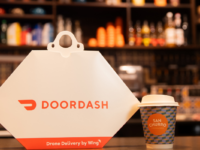McDonald’s Corporation reported global comparable sales growth of 11.7 per cent in the quarter ended June 30.
The fast food chain also recorded double-digit comparable sales growth across all segments in Q2, including a 10.7 per cent increase in the US market, 11.9 per cent in international operated markets, and 14 per cent in international markets with developmental licenses.
Consolidated revenues and systemwide sales were up 14 per cent and 18 per cent, respectively, while operating income increased by 81 per cent and net income 94 per cent.
“Our second quarter results reflect consistently strong execution of our Accelerating the Arches strategy,” said Chris Kempczinski, McDonald’s president and CEO.
“While global macroeconomic challenges persist, we continue to invest in our growth drivers and our brand to meet the customer needs of tomorrow.”
Three dynamics that boosted McDonald’s global sales
The company’s value for money message is one that arguably resonates even more strongly during periods of financial worry, commented Neil Saunders, MD of GlobalData.
He cited three dynamics working in McDonald’s favour. The first is customers trading down from mid-market family restaurants to cheaper fast-food outlets like McDonald’s – this saves them money but still provides them with the treat of eating out.
“The second is a group of consumers who have increased their use of fast-food outlets, including McDonald’s, because they find it is an occasional, cost-effective way of feeding the family. This underlines the strong value for money message of McDonald’s is still resonating, even after menu prices have increased,” said Saunders.
“The third group are those who are indulging themselves a little more because of the gloomier economic times. Among these people, McDonald’s is seen as an affordable indulgence that helps them feel a bit better.”
Taken together, he said, these dynamics have boosted trade at McDonald’s.
Growth was helped by selective increases in menu prices, but customers seem to have taken this in their stride as diner numbers and transactions were also up, Saunders elaborated.
Strong marketing campaigns, solid menu innovation, and digital investments also contributed to the growth.
Some of the positive results is flattered by weak numbers from last year when exceptional charges from the sale of the Russian business weighed on the results, he continued, adding “buried within this are the positive consequences of good cost control and higher sales”.
Author: Sean Cao. This article was first published on sibling website Inside Retail.
















